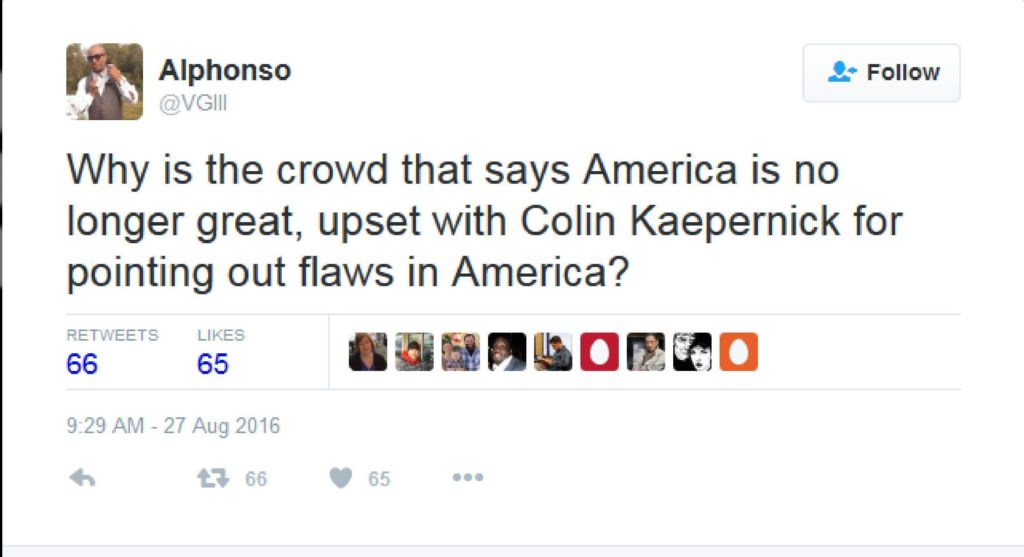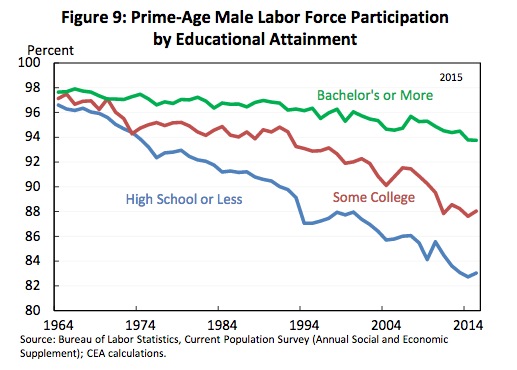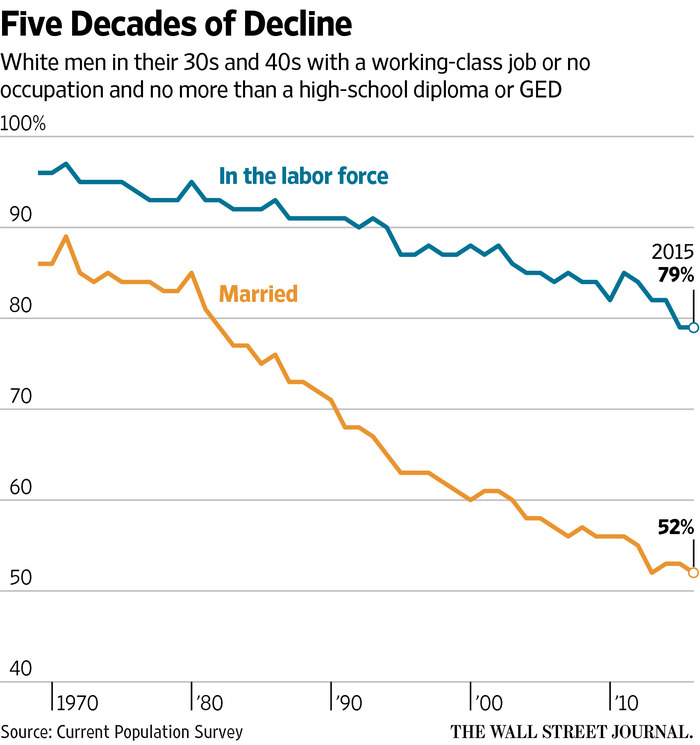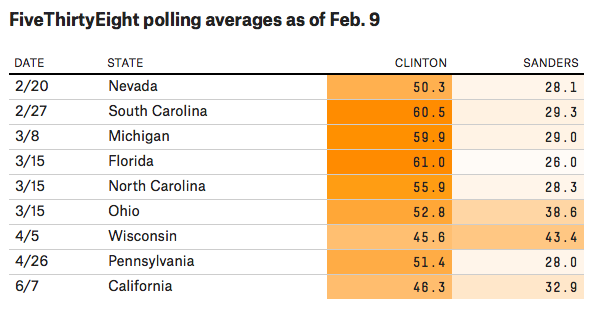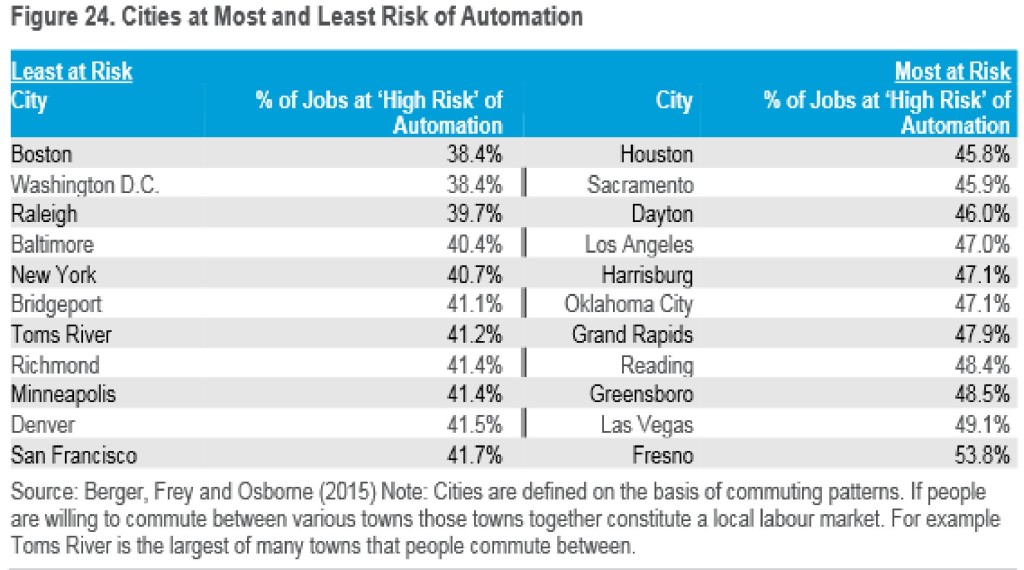If so, we all must be blissed out. Yesterday, we talked about how the media love to air candidates’ ’’dirty laundry”, rather than concentrate on examining their policies. Today, we ask the question, “Where and how do people get their news?”
The current US population is around 320 million. Of that number, there are 219 million people eligible to vote, of which 145.3 million (66%) are registered to vote in the US. So, how many people are watching the news on ABC, CBS or NBC? In August 2016, the number was 22.5 million. That’s down from 48 million in 1985, and from 24.5 million in 2013.
And how many watch the cable giants Fox News, MSNBC and CNN? Overall, Fox News averaged 2 million total viewers while MSNBC averaged 1.13 million, and CNN trailed with 844,000. That’s four million viewers total, folks.
Taken together, major network and cable TV account for 26.5 million viewers, or 18.2% of registered voters. And we have no data on the overlap between viewers and voters.
How else do the campaigns reach voters? Social media. From the Wall Street Journal:
Of the two candidates, Mr. Trump has the largest following on social media — with 10.3 million Twitter followers and 9.9 million Facebook likes, compared to Mrs. Clinton’s 7.78 million followers and 4.8 likes.
This means that the two campaigns have more direct reach than any individual TV or cable outlet. Clinton has nearly as many Twitter followers as CBS has viewers, while Trump has even more, and also has FIVE times as many Twitter followers as his friends at Fox have viewers. And we can assume that all of those followers are likely voters, not passive viewers.
The campaigns use different strategies. A new Pew study of the campaign websites of Clinton and Trump found that Clinton’s website focused on original news content, while Trump mostly re-posted stories from outside news media. Clinton’s campaign has almost entirely bypassed the news media; instead, they post news stories produced in-house. Trump’s site offers mostly content from articles produced by outside sources like Fox News or CNN.
Pew also surveyed where people get their news:
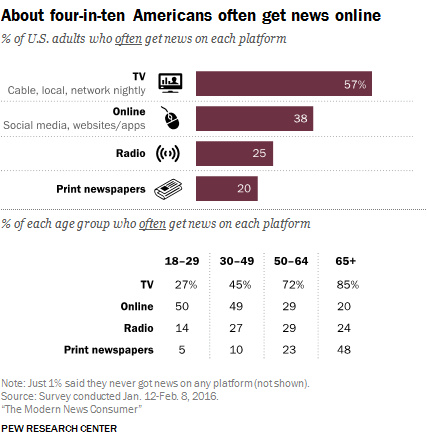
- As of early 2016, just 20% of US adults get their news from print newspapers. This has fallen from 27% in 2013.
- This decrease occurred across all age groups, though the age differences are stark: Only 5% of 18- to 29-year-olds often get news from a print newspaper, whereas about half (48%) of those 65 and older do.
- Compared with print, nearly twice as many adults (38%) often get news online, either from news websites/apps (28%), on social media (18%), or both.
- TV continues to be the most widely used news platform; 57% of U.S. adults often get TV-based news, either from local TV (46%), cable (31%), network (30%) or some combination of the three.
If you are watching a traditional TV newscast, you are a dinosaur: Fully 70% of those ages 18-29 either prefer, or only use mobile for getting their digital news, compared with 53% of those 30-49, 29% of those 50-64 and just 16% of those 65+.
According to Pew, radio is a more frequently used news source than newspapers. In fact, 13.25 million people listen to Rush Limbaugh, while 12.6 million listen to NPR’s Morning Edition, making both more followed than any of Fox, MSNBC, CNN, CBS, NBC, or ABC.
While there has been an explosion on the digital front, readership (viewership?) is now totally fragmented. This fragmentation is a key to understanding today’s political landscape. Twenty-five years ago, we had a core of news outlets that helped the political parties build a public consensus. That’s no longer the case. Traditional media are at best, just one stream in a whole chaotic flow. Picking and choosing whom to follow (and trust) in this river of chaos isn’t easy. The fundamental questions are:
- Does watching a specific news feed inform you, leave you asking questions, or create confusion?
- Does the power of images displayed on an individual news feed interfere with understanding the context of a complex situation?
- Are news outlets providing users with both education about events, AND a sense of civic responsibility?
- How do you know you can “trust” a given news feed?
With so many options for learning about our world and government policy, we could either be on the cusp of a reboot of the Age of Enlightenment, or, the news feed chaos could help bring on another Dark Ages.
Choose wisely.

